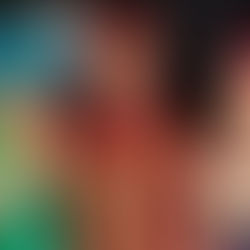Maths meets Magic: the secret formula for storytelling

A Mathematical Journey Through Literature: Sarah Hart was a Resonate Festival author event, at Warwick University on 13 November 2024.
Review by Annette Kinsella.
If author Sarah Hart had tried to tell 11-year-old me there was a link between maths and literature I’d have laughed. Once I’d finished crying over my fiendishly difficult algebra, that is. Like many people, I loved English but hated numbers. Sine, cosine and tangent remained a permanent mystery to me, whereas books and writing offered a big comforting hug – the paper equivalent of a cup of tea and a Twirl bar.
However, mathematician and all-round brainbox Sarah Hart, author of bestseller Once Upon A Prime, has given me pause for thought. Speaking at Warwick University as part of the Resonate Festival, Hart cleverly proved how the patterns and structures identified in maths are mirrored in all aspects of art and literature. When I thought about it, this checked out - even 11-year-old me would be able to appreciate that her beloved Spirograph set, which used a set of wheels and gears pinioned to paper to create intricate fractals and spirals, was based on principles of symmetry and geometry. There’s none so blind as Will Not See I suppose. Especially if Will Not See’s eyes are blurry from crying over algebra homework. Maths, you’re your own worst publicity agent. Get better PR!
Hart used the repeating patterns of numbers, like three, in stories to show how mathematical concepts repeat through literature. The number three occurs in stories across the world and through time, from Goldilocks and the Three Bears or the Three Little Pigs, to Harry Potter’s Deathly Hallows, the symbol made up of the invisibility cloak, the wand and the resurrection stone. It’s even seen in religious motifs and symbols, like the Father, the Son and the Holy Ghost.
This is no coincidence – Hart explained how the number three is an essential part of every storytelling narrative. The first two points provide a stable structure, while the third deviates to introduce a twist, such as the third pig who builds a stone house, enabling the defeat of the wolf. Or, to return to the Bible, the serpent who tempts Eve with the apple, causing the fall of (hu)man. If we were to draw out these plot points we end up with…. A triangle! Magic.
I wasn’t enough of a boffin to follow all Hart’s points, eloquent though they were – I floundered a bit at the complex mathematic equations. But I clearly understood one of her final statements – which was today’s school curriculum which appears to neglect arts in favour of STEM (maths and science) subjects is reductive and shortsighted, doing a disservice to all students. Creativity is essential for maths, Hart argued. Reducing subjects to how much money can be generated from them in years to come is counterintuitive, as we don’t know what will be needed in the future. Amen to that.
Following this event, I will certainly see maths in a new and rose-tinted light. I only wish I could have told 11-year-old me, wrestling with the mysteries of n and x, to take heart. These abstract formulae may seem pointless – but they hold the same powers that will one day help Bilbo Baggins from the Lord of the Rings riddle his way out of a stand-off with Gollum, or Harry Potter show Voldemort who is boss. In other words, as Hart proves, maths and literature share a secret – they are both magic.
For more information go to www.resonatefestival.co.uk



















Looks amazing. I didn't struggle with maths, but wish I had been at the lecture.